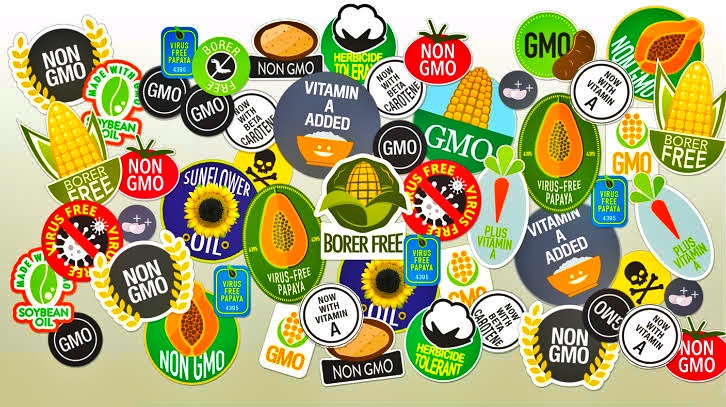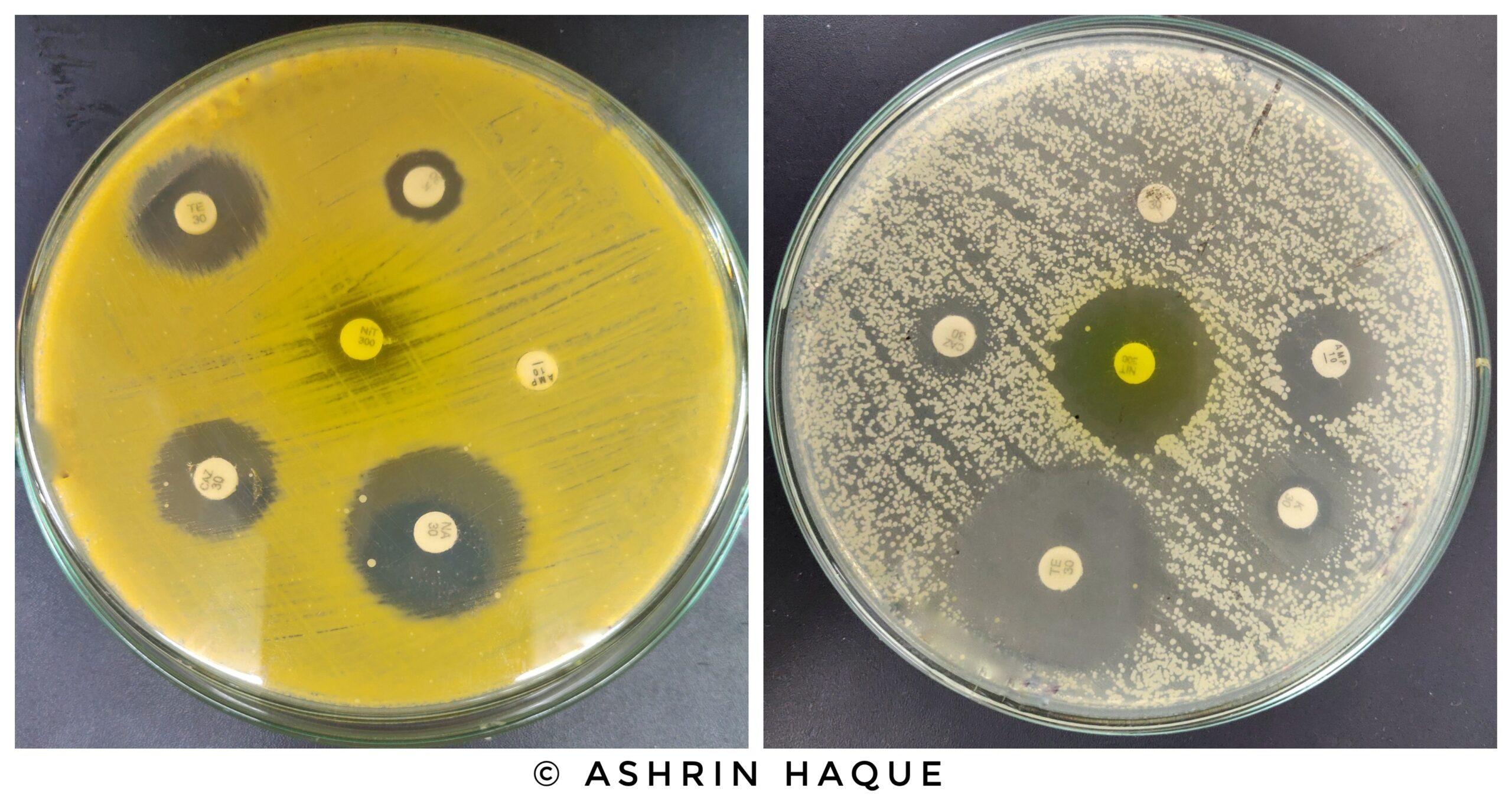GMOs or genetically modified organisms are living organism and their genetic material have been purposefully altered by genetic engineering (WHO, 2014). GM foods are mainly bioengineered foods, produced from an organism that genetic makeup has been altered by genetic engineering. Crops are undergone genetic engineering to improve crop yielding, increase nutrient value, stress resistance, and increase plant immunity. The first commercial GM tomato was introduced in 1994 and since then, many crops and animals have been genetically modified (U.S. F.D.A, 2021). With emerging GM foods, many controversies have arrived, and many experiments have debunked this controversy.
There is a concern about GM food is that it is not safe for humans as it often contains a portion of another organism’s genome. But it is known that maximum plants and animal cells carry about 30,000 genes, whereas GM crops contain an additional 1-10 genes in their cell. For example, a tomato has 31,760 genes, but after eating, they all get broken down into micromolecules and rarely small DNA fragments (bp) (Tomato Genome Consortium, 2012). Our diet always contains some DNA from non-GM foods, and we naturally consume them without any effects. The composition of GM food is almost similar to non-GM food, and that is why eating GMOs does not have significant differences and will never affect our health.
When we cook food, most of the DNA gets degraded, then our digestive system does the rest (Royal society, 2021). Our stomach pH is 1.5 to 3.5, which causes depurination and strand breakage. In addition to that, one study showed that gastric juice contains pepsin which is responsible for most Nucleic acid degradation (Liu et al., 2015). As a result, our cells only get bases like A, T, G, C from the food’s DNA or RNA and use them to make our genome. In a hypothetical situation, if food’s DNA changed our DNA, when we eat rice we should become like rice, but it doesn’t happen.
Another concern about GMO food is that it can change our DNA through horizontal gene transfer, which is incorrect. The frequency of horizontal gene transfer from GMOs to humans is expected to be lower than the background rate and that’s why risk is very low (Keese, 2008). Scientists also explored the ability of a GMO causing mutations, and to do that, they applied the Ames test to GMO tomatoes and corn and found no relationship between GMO and mutations (Brake et al., 2004). In another study, researchers showed that multiple generations of mouse models didn’t contain bar genes though they were fed GM potato (Seek Rhee et al., 2005).
So, finally, it can be said that GM foods are safe, and most of the time, these foods are more nutritious than their no-GM counterparts. The DNA of GM foods is just a code that does not have harmful effects on human health. All the GM foods approved by biosafety authorities are safe.
References:
- Brake, D.G., Thaler, R. and Evenson, D.P., 2004. Evaluation of Bt (Bacillus thuringiensis) corn on mouse testicular development by dual parameter flow cytometry. Journal of Agricultural and Food Chemistry, 52(7), pp.2097-2102.
- Keese, P., 2008. Risks from GMOs due to horizontal gene transfer. Environmental biosafety research, 7(3), pp.123-149.
- Liu, Y., Zhang, Y., Dong, P., An, R., Xue, C., Ge, Y., Wei, L. and Liang, X., 2015. Digestion of nucleic acids starts in the stomach. Scientific reports, 5(1), pp.1-11.
- Royalsociety.org. 2021. Could eating GM food affect my genes? | Royal Society. [online] Available at: https://royalsociety.org/topics-policy/projects/gm-plants/could-eating-gm-food-have-an-effect-on-my-genes/
- Seek Rhee, G., Hyun Cho, D., Hyuck Won, Y., Hyun Seok, J., Sun Kim, S., Jun Kwack, S., Da Lee, R., Yeong Chae, S., Woo Kim, J., Mu Lee, B. and Lea Park, K., 2005. Multigeneration reproductive and developmental toxicity study of bar gene inserted into genetically modified potato on rats. Journal of Toxicology and Environmental Health, Part A, 68(23-24), pp.2263-2276.
- Tomato Genome Consortium, 2012. The tomato genome sequence provides insights into fleshy fruit evolution. Nature, 485(7400), p.635.
- U.S. Food and Drug Administration. 2021. Science and History of GMOs and Other Food Modification Processes. [online] Available at: https://www.fda.gov/food/agricultural-biotechnology/science-and-history-gmos-and-other-food-modification-processes
- World Health Organization, 2014. Food, genetically modified. [online]. Available at: https://www.who.int/news-room/q-a-detail/food-genetically-modified.
Since the article has been written to reflect the actual views and capabilities of the author(s), they are not revised for content and only lightly edited to be confirmed with the Learn life sciences style guidelines










excellent post, very informative. I ponder why the opposite specialists of this sector do not understand this. You should proceed your writing. I am sure, you’ve a great readers’ base already!
Hey! This post couldn’t be written any better! Reading this post reminds me of my
previous room mate! He always kept chatting
about this. I will forward this article to him.
Pretty sure he will have a good read. Thank you for sharing!
Sweet blog! I found it while searching on Yahoo News. Do you have any tips on how to get listed in Yahoo News? Ive been trying for a while but I never seem to get there! Cheers http://www.links.m106.com
Great post. I used to be checking continuously this blog and I am inspired! Extremely helpful info specially the closing section 🙂 I deal with such info much. I used to be looking for this particular info for a long time. Thank you and good luck.
Everything is very open and very clear explanation of issues. was truly information. Your website is very useful. Thanks for sharing.
Regards for all your efforts that you have put in this. very interesting information.
F*ckin’ tremendous issues here. I’m very glad to look your post. Thanks a lot and i am taking a look forward to contact you. Will you please drop me a mail?
Great, thanks for sharing this blog post.Really looking forward to read more. Really Cool.
A good article on GMO Products. Informative as well.
Lookong something more from you.
Thanks for your blog, nice to read. Do not stop.
I have read your article carefully and I agree with you very much. This has provided a great help for my thesis writing, and I will seriously improve it. However, I don’t know much about a certain place. Can you help me? https://www.gate.io/fr/signup/9127596